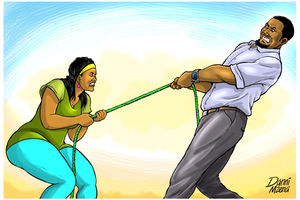40yrs after Moshi Conference, still no common vision in Uganda

Timothy Kalyegira
What you need to know:
Nyerere knew that winning the war against the government of Ugandan president Idi Amin, hard-fought though it was, was the easier part. The hard part was what to do about the power vacuum left behind in the post-Amin Uganda.
Just over 40 years ago, in late March 1979, a conference was convened in the northern Tanzanian town of Moshi.
It was sponsored by the government of president Julius Nyerere whose army was on the verge of winning a war against Uganda that had started in November 1978.
Nyerere knew that winning the war against the government of Ugandan president Idi Amin, hard-fought though it was, was the easier part. The hard part was what to do about the power vacuum left behind in the post-Amin Uganda.
Nyerere was under pressure and a great deal of condemnation from some quarters in the Organisation of African Unity (OAU) and the Arab world over launching a war against a sister OAU state.
He had to justify his action by facilitating an orderly post-Amin Uganda.
The Tanzanian government invited the various fighting and study groups in Tanzania, Kenya, Zambia, Britain and the United States to give their input in the process of rebuilding Uganda.
Thus the delegates met from March 24 to March 26, 1979.
The Moshi Conference was a meeting of incompatible interests and reflected Uganda’s unfinished business.
It was the second general conference called to discuss and decide Uganda’s fate since the Lancaster Conference in September 1961 called to plan for Uganda’s independence.
Idi Amin was the focal point and excuse for the Moshi Conference, the Tanzania-Uganda war and the call for a fresh start for Uganda, but what that new Uganda should be differed widely.
To traditional Baganda such as Andrew Kayiira, Yusuf Lule and others, a post-Amin era offered the chance not simply to undo the eight years of Amin but also the five years preceding Amin’s rule between the attack on the Lubiri in May 1966 and the military coup in January 1971.
That is why many opposed any mention of the former president Milton Obote being returned to power.
To help the conference succeed, president Nyerere advised Obote not to attend the conference; he knew how divisive Obote’s presence would be.
Obote’s supporters and the UPC party, of course, saw Moshi differently. It was, to them, the opportunity to wipe away what they saw as the nightmarish eight years of Amin and return to where they had abruptly stopped in 1971, with their full-on drive for a Socialist republic Uganda.
Among some smaller, fringe groups that counted the exiled Bishop Festo Kivengere among their numbers, the Moshi Conference was also an opportunity for a fresh start, the purpose of which was to restore Uganda to its traditional Christian roots in what to them had felt like an unwelcome invasion of the State by illiterate and semi-literate Muslims.
To another category, Moshi presented an opportunity for jobs in high places.
To others, it was a route to the end of their years in the humiliation of exile and loneliness and obscuring away from home.
To still others, the Moshi Conference was simply a way to avenge the death or disappearance of loved ones during the Amin years.
The only commonly agreed view in all this was that “Amin must go”.
It is no wonder, then, that within months of Amin’s fall from power in April 1979, the government that replaced him, the UNLF, began to fall apart as the different and fundamentally incompatible ideas of what Uganda should be came to the fore.
To this day, 40 years since the Moshi Conference, there is still no clear and common understanding of what Uganda should be.
At present, there is a growing tide and mood across Uganda and among Ugandans living abroad of “Museveni must go”.
President Yoweri Museveni, it should be borne in mind, was one of the key delegates at the Moshi Conference but today has become in the eyes of many, the stumbling block to Ugandans’ freedom, happiness and prosperity that Amin was seen as in 1979.




